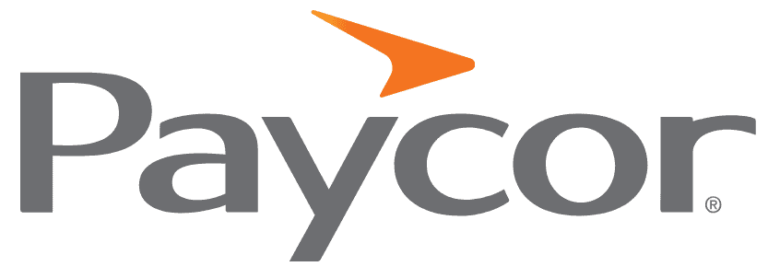What Is a W-2 Form?
A W-2 is an Internal Revenue Service (IRS) tax form that employers use to report how much they pay their employees. Employers create a form for each employee at the end of the year.
W-2s break down how much is made before taxes (gross income), how much is deducted for taxes and how much is made after taxes (net income). Employees use these numbers to file their annual tax returns.
What Is a 1099 Form?
Form 1099-MISC is another common tax document. It reports income for independent contractors, freelancers and self-employed workers.
Unlike the W-2 form, which reflects taxes withheld by an employer, the 1099 form shows gross income with no taxes withheld. This means that the recipient of the 1099 form is responsible for calculating and paying their own taxes.
What Is the Difference Between W-2 Employees and 1099 Contractors?
When it comes to employment in the United States, there are two primary worker classifications: W-2 employees and 1099 contractors. These classifications define the working relationship, tax responsibility, benefit eligibility, job security and more.
Employment Status
The fundamental distinction between W-2 employees and 1099 contractors lies in the type of relationship they have with the hiring entity.
W-2 employees are legally considered part of the company’s staff. They have set work hours and responsibilities and get the security of continued employment unless fired or let go. On the other hand, 1099 contractors control who they work for and how much they work. They are often called gig workers because they are hired to complete specific tasks or projects.
Taxes
Employers automatically deduct taxes for their W-2 workers. These deductions include the federal, state and local income taxes as well as the Federal Insurance Contributions Act (FICA) payroll taxes. Income taxes vary based on where the employee lives and how much they make. However, FICA taxes are the same for everyone. 6.2% of income goes to Social Security, and 1.45% goes to Medicare. The employer matches these amounts for a total of 15.3% going to the federal government for FICA taxes.
In contrast, 1099 contractors get gross pay, not net pay. Therefore, they calculate and pay federal, state and local income taxes as well as the entirety of the 15.3% FICA payroll taxes after the fact.
Benefits
Employers usually offer subsidized benefits to their full-time W-2 employees. The idea is that if employees have a good quality of life, they are more likely to want to and be able to stick with the company. Some common employee benefits include:
- Health, dental, vision and life insurance
- Access to and contribution matching for retirement plans
- Education assistance
- Child care assistance
- Gym memberships, nutrition classes and other wellness-related expenses
In contrast, 1099 contractors are not eligible for benefits through their clients. They are responsible for securing their own health insurance, setting aside their own retirement savings and paying for the entirety of their other expenses.
Job Security and Work Independence
As previously mentioned, W-2 employees have stable and predictable income. However, they get less control over their work schedule. 1099 contractors have the opposite experience. They can set their hours and choose their clients, but their income varies from month to month based on how much work they do for how many clients.
Examples of W-2 and 1099 Roles
Let’s put these explanations into practice with some real-world examples of what 1099 and W-2 roles look like.
W-2 Employee Roles
W-2 roles are typically more structured with set hours and defined scopes. Here are some examples of them:
- Office employees: This broad category includes executive assistants, human resources professionals, receptionists, accountants and other roles that keep a business running.
- Health care workers: Nurses, doctors and other health care professionals in hospitals and clinics are usually hired on a W-2 basis. Clinics tend to have fixed schedules for employees, but hospitals schedule in shifts.
- Teachers and educators: Teachers, counselors and administrators at public and private schools fall into this bucket.
- Retail workers: Retail workers include everyone from sales associates to store managers. Hours vary for these employees, and only those who reach management usually get benefits.
1099 Contractor Roles
1099 contractors are common in sectors that demand specialized skills or flexible schedules. Some examples of these types of workers include:
- Freelance writers, editors and designers: These professionals typically work on a project basis. They charge by the number of items written, edited or designed.
- Consultants: Whether in management, IT or marketing, consultants offer expert advice to businesses on a contractual basis.
- Real estate agents: Realtors find clients through referrals or marketing efforts. They get a portion of the profit from the properties they help these clients buy or sell.
- Construction contractors: These individuals often run their own businesses, taking on home renovations and new builds as they see fit.
W-2 vs. 1099 Tax Implications
Navigating the tax landscape for 1099 contractors and W-2 employees involves understanding the differences in hiring, deducting, withholding and filing.
Hiring
When an employer hires someone, they send that person a tax form to fill out. That form is Form W-4 for employees and Form W-9 for contractors.
Form W-4 collects basic personal information, such as legal name, address, date of birth and Social Security number. It also collects information on marital status and dependents, as this tells the employer how much to deduct for taxes. Form W-9 collects the same personal information, but it doesn’t put this information to use until the employer issues the 1099 at the end of the fiscal year.
Deducting
Tax deductions are business expenses you subtract from your income so that you don’t pay taxes on them. Since contractors often work from home, they can write off home office expenses, such as laptops and pens. If they meet a client, they can also write off the cost of using their personal car or taking public transit. In contrast, W-2 employees typically cannot claim these deductions because their employers cover or reimburse them.
Withholding
Employers do most of the tax legwork on behalf of their W-2 employees. Employers withhold Social Security, Medicare and income taxes from paychecks so that employees don’t have to calculate these deductions themselves. All of the deductions from throughout the year go on Form W-2, which employees then report to the IRS.
In contrast, 1099 contractors are responsible for making estimated tax payments quarterly since their income doesn’t undergo automatic withholding. These payments include federal income taxes as well as Social Security and Medicare self-employment taxes. As these payments are just estimations based on what the contractors think they will make, there may be corrections come tax season when they report their actual income through 1099s from their clients.
Filing
Employers must send W-2s for the previous year by Jan. 31. W-2 employees must use their W-2s to file their tax returns by April 15.
Contractors also get their 1099s by Jan. 31 and file their returns by April 15. However, they have some extra tasks where they use Form 1040-ES to calculate their quarterly estimated payments. They can send these payments by mail or through the Electronic Federal Tax Payment System (EFTPS). These payments are due Jan. 15, April 15, June 15 and Sept. 15.
Misclassifying Employees
Being classified as a W-2 employee comes with many advantages. We already talked about two of them — your employer subsidizing benefits and covering half of FICA taxes. However, federal and/or state laws also give you access to the following protections:
- Minimum wage and overtime pay if you work part-time (under the Fair Labor Standards Act)
- Unpaid, job-protected leave for family and medical emergencies (under the Family and Medical Leave Act)
- Workers’ compensation if you get injured on the job (law varies by state)
- Unemployment insurance if you are laid off (law varies by state)
These protections can cost employers. Therefore, some of them try to classify workers who should be W-2 employees as 1099 contractors. Not only is this short-changing deserving employees, it can also lead to legal repercussions.
At the very least, an employer who gets caught is subject to:
- A $50 fine for each W-2 not filed
- A penalty of 1.5% of the employee’s wages
- Back taxes equal to 40% of the employee’s portion of FICA taxes and 100% of the employer’s portion of FICA taxes
If it is found that the employer intentionally misclassified the employee, they see heavier penalties, such as a $1,000 fine and one year in jail. These are just the penalties from the federal government. The state could tack on additional ones, and the wronged employee could sue.
In sum, you want to avoid misclassification at all costs. The IRS has a page dedicated to worker classification to help you with this.
Frequently Asked Questions About W-2s vs. 1099s
Employers might prefer 1099 contractors over W-2 employees because they can use them only when they need them. They can also avoid paying benefits and withholding taxes.
To hire a 1099 contractor, you need to send them Form W-9 to collect their personal details. Come tax season, you need to prepare a 1099-MISC form.
Yes, an individual can receive both a 1099 and a W-2 in the same year if they have a W-2 job and work as a freelancer on the side.
Income tax rates for 1099 contractors and W-2 employees vary based on level of income and place of residence. However, FICA payroll taxes are set. W-2 employees pay 6.2% for Social Security taxes and 1.45% for Medicare taxes, and their employers match the same percentages. 1099 contractors pay the entirety of FICA taxes, so they pay 12.4% to Social Security and 2.9% to Medicare.
Working as a 1099 contractor can be worth it if you value flexibility and autonomy and don’t mind the additional tax responsibilities and lack of employer-provided benefits.
If you have feedback or questions about this article, please email the MarketWatch Guides team at editors@marketwatchguides.












